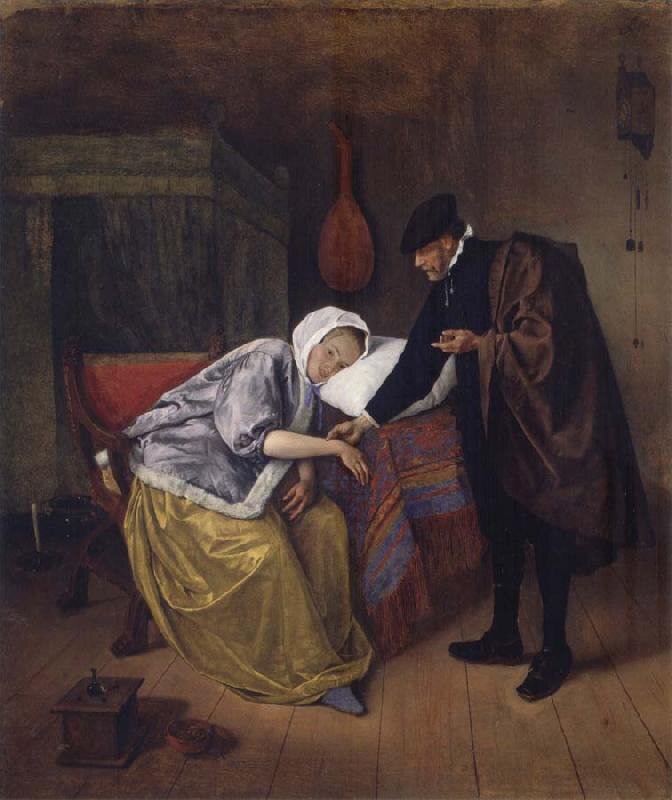Maternal Mortality in New France
In New France, childbirth was extremely painful and potentially life-threatening, with about 1.5% of women dying in the 60 days following childbirth. Learn why maternal death was so prevalent and how society was eventually able make pregnancy and childbirth safer for mothers.
Cliquez ici pour la version en français
Maternal Mortality
Maternal mortality, or maternal death, refers to deaths occurring during pregnancy, childbirth, or within 42 days after delivery.
“De zieke vrouw” (the Sick Woman) by Jan Havickszoon Steen, circa 1663-1666 (Rijksmuseum Amsterdam)
In New France, childbirth was extremely painful and potentially life-threatening, with about 1.5% of women dying in the 60 days following childbirth. Or put another way, one death occurred with every 80 births. That equates to a maternal mortality rate of 1,250 deaths per 100,000 live births! For comparison, Canada's maternal mortality rate in 2022 was 8.53 deaths per 100,000 live births (30 maternal deaths).
Without modern medicine and conveniences, pregnancy and childbirth were physically demanding, if not dangerous. The risk of maternal mortality was highest in the two or three days after childbirth, when the mother could die from hemorrhage. After childbirth, she would typically be completely exhausted. She would need three or four weeks to fully recover. In the countryside, however, she likely wouldn’t have this option. She would have other children and a home to take care of, as well as animals and a garden to tend to. This meant that she didn't have much time to recover and would generally be out of bed fairly quickly. This is the reason why the risk of maternal death was so high. Data shows that older women between the ages of 30-45 were at even higher risk of maternal death, having gone through several pregnancies and births already.
The specific causes of death could be severe bleeding during childbirth, infections post-childbirth, high blood pressure during pregnancy (pre-eclampsia and eclampsia) or other complications from delivery.
Modern health professionals, medicine, improved hygiene practices and birth control, among other factors, have all contributed to the significant lowering of the maternal mortality rate in Canada over the last four centuries.
Enjoying our articles and resources? Consider showing your support by making a donation. Every contribution, no matter how small, helps us pay for website hosting and allows us to create more content relating to French-Canadian genealogy and history. Thank you! Merci!
Sources:
Hubert Charbonneau, Vie et mort de nos ancêtres : Étude démographique (Montréal: Les Presses de l'Université de Montréal, 1975), 140-148.
André Lachance, Vivre, aimer et mourir en Nouvelle-France; Juger et punir en Nouvelle-France: la vie quotidienne aux XVIIe et XVIIIe siècles (Montréal: Éditions Libre Expression, 2004), 38-40.
Public Health Agency of Canada, "Maternal Mortality in Canada", Government of Canada (http://publications.gc.ca/collections/collection_2012/aspc-phac/HP10-19-2011-eng.pdf), 2011.
World Health Organization, "Maternal Mortality", WHO Newsroom (https://www.who.int/news-room/fact-sheets/detail/maternal-mortality), updated 19 Sep 2019.
